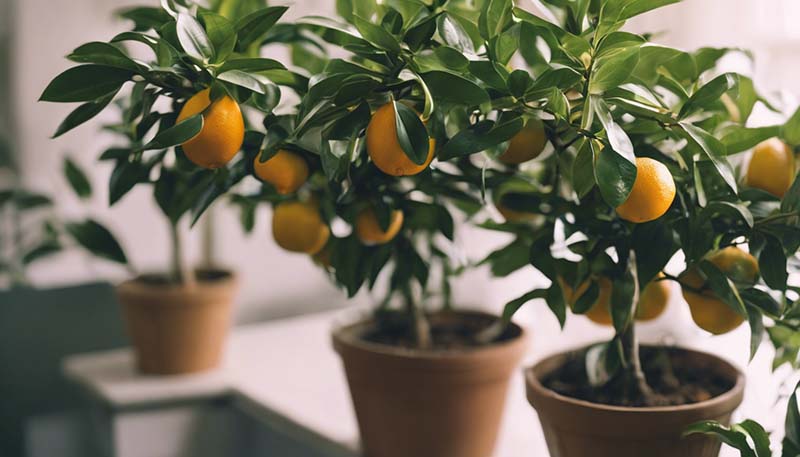Indoor Gardening: How to Grow Indoor Citrus Trees
Welcome to the delightful world of indoor gardening with citrus trees. Citrus trees not only add a touch of the tropics to your home but also provide you with fresh, homegrown fruit. Growing citrus indoors can be a rewarding experience if you provide the right conditions and care for your trees.
Table of Contents
- Choosing the Right Citrus Tree
- Light Requirements
- Selecting the Right Container
- Soil and Drainage
- Watering Guidelines
- Fertilizing Your Citrus Tree
- Pruning for Shape and Health
- Dealing with Pests and Diseases
- Repotting Your Citrus Tree
- Encouraging Fruit Production
Choosing the Right Citrus Tree
When selecting a citrus tree for indoor cultivation, consider the space you have available and the type of citrus you enjoy. Common choices for indoor citrus trees include lemon, lime, orange, and grapefruit trees. Dwarf varieties are ideal for indoor spaces as they stay more compact.
Advertisement
Light Requirements
Citrus trees need plenty of bright, indirect light. Place your tree near a south or east-facing window where it can receive at least 6 to 8 hours of sunlight daily. If natural light is insufficient, consider using grow lights to supplement.
Selecting the Right Container
Choose a container with drainage holes to prevent waterlogging. Terracotta pots are a good choice as they allow the soil to dry out more quickly, reducing the risk of root rot. The pot should be large enough to accommodate the tree's root system but not so large that it takes years to fill with soil.
Soil and Drainage
Use a well-draining, slightly acidic potting mix. A mix designed for citrus or acid-loving plants is ideal. Make sure the soil is free-draining to prevent root rot, which can occur if the roots sit in water for too long.
Watering Guidelines
Water your citrus tree when the top inch of soil feels dry to the touch. Overwatering can lead to root rot, while underwatering can cause the tree to become stressed and drop fruit. It's better to underwater slightly than to overwater.
Fertilizing Your Citrus Tree
Feed your citrus tree with a slow-release fertilizer specifically formulated for citrus or a balanced liquid fertilizer diluted to half strength. Fertilize once a month during the growing season (spring and summer) and reduce feeding to once every two months in the fall and winter.
Pruning for Shape and Health
Prune your citrus tree to maintain its shape and size, and to remove any dead or diseased branches. Pruning also encourages the growth of new branches and fruit. The best time to prune is in the early spring before new growth begins.
Dealing with Pests and Diseases
Keep an eye out for common pests such as scale, aphids, and spider mites. Use insecticidal soap or neem oil to control these pests. For diseases, ensure good air circulation around the plant and avoid overhead watering to prevent fungal issues.

Repotting Your Citrus Tree
Repot your citrus tree every 2 to 3 years or when it becomes root-bound. Choose a new pot that is 1 to 2 sizes larger than the current one and use fresh potting soil. Be gentle with the roots to minimize damage during repotting.
Encouraging Fruit Production
Citrus trees may need a cooler temperature at night to encourage fruiting. If your home stays too warm, consider moving the tree to a cooler room at night, or use a thermostat to regulate the temperature. Additionally, ensure that your tree receives adequate light and nutrients.
Growing citrus trees indoors can be a rewarding and delightful experience. With the right care and attention, you'll be able to enjoy the beauty and bounty of your very own indoor citrus orchard.
Note: Citrus trees may have different specific needs, so always consult a detailed guide or expert advice for the particular type of citrus you are growing.
Comment